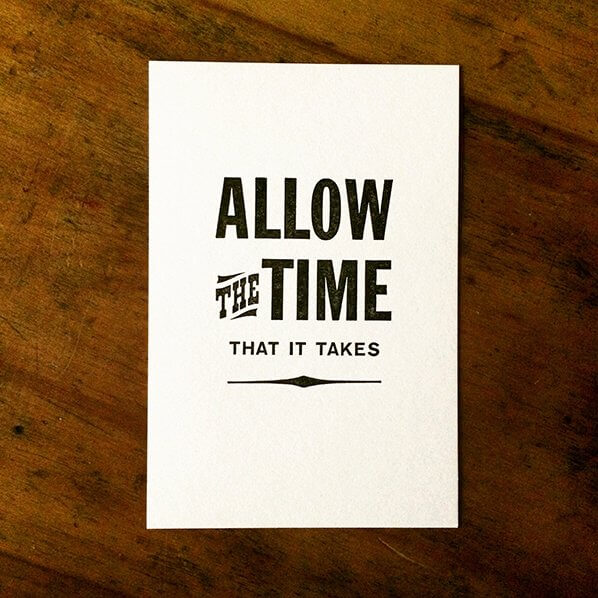
This week I met with a friend who is dealing with a tricky ethical issue around board governance. They appeared to be wrestling with what decision to make amidst a number of variables lending complexity to the decision.
I listened to them and it appeared clear that they had all the information at their disposal that they could get in order to make the decision, yet it still was difficult for them to decide.
My advice?
Allow some time before making a decision.
Also, I then suggested to them that they focus on other work, other decisions, that they:
Put it down and focus on something else
So, why did I give these two pieces of advice?
Well, if we have all the facts available and that we need and yet we can’t be clear on a decision, my experience has always been that there is value in pausing to decide. I’ve also found that if we “put it down” and focus on something else for a time, then this brings additional clarity.
We tend to bias ourselves towards fast decision making, yet this does not allow for the value of reflecting after “putting it down” for a time. Let us recognise that sometimes the fastest decision is not always the best!
Some time ago I wrote a long post called “Slow-motion multitasking“, and in part of that post I told a story that makes the point about the value of putting it down, of pausing:
When I was 21, I owned a classic sports car that was a little older than me. Put another way, it was a rusty and creaky Triumph Spitfire convertible. One day I picked up a friend at Edinburgh University to drive him to where we both lived outside the city. We got in the car and I decided to show off by revving the engine and spinning the wheels as we took off, only as I did this the engine kept revving and the wheels didn’t move. Oops, I’d broken the car. I’d disintegrated the rear wheel drive differential. The car was literally undrivable.
Fast forward a few weeks. First, we’d towed the car all the way out to my father’s house in that village outside Edinburgh. Next, I’d gone to multiple salvage yards before finding a replacement rear differential at a budget affordable to me (ie very cheap!). So, here I was, with the car up on jacks, lying underneath it trying to disassemble the very dirty and rusty 22-year-old rear differential before then looking to replace it with the marginally newer (but at least functional) one.
This was a seemingly interminable task of not only trying to loosen bolts held fast but also doing in a sequence that helped others loosen up in a way that would ultimately free up the entire assembly to be removed. It quickly felt like I’d taken on an impossible task for someone with very little mechanical experience.
Evening after evening I patiently laboured for hours with cleaning fluid, lubricants to loosen bolts, wrenches of all different kinds. It was hugely frustrating, yet one learning gradually emerged. Each evening I would get out from under the car, exhausted and mentally beaten down, wondering what on earth I could do to “unstick” this problem. It always seemed totally unsolvable, however, each new morning I would wake up and suddenly, miraculously it seemed, realise what the next step would be in the puzzle.
Though it ultimately took me about a week to complete the entire task, several times I went to bed feeling I would never find the answer, only to wake the next morning to have total clarity on the next step.
What created that clarity? Changing tasks. Each evening I would have spent all day under the car labouring steadily and slowly, but when I went into the house I’d shower, have dinner with family, chat, watch TV, perhaps go to my room and listen to music and practice with drumsticks and my drumming mat. Most of all, though, I’d sleep, solid as a rock with exhaustion. This then allowed the brain to go to work with a combination of deep and REM sleep, allowing waking up fresh with seemingly miraculous powers to solve the problems that were so intractable the night before!
I’ve always remembered this experience. Did I consciously choose to work on a frustrating motor mechanics issue as “intellectual crop rotation” or “slow motion multitasking”? I did not.
I have, however, applied what I learned so many times, as well as using the story in coaching clients who have been “stuck” looking to solve a problem. Sometimes we can shift that sense of being stuck in a coaching meeting, and at the same time, I have often used that story as a tool to then ask them what they can do to “shift gears” then come back to their issue later.
Sometimes for clients that has meant going to walk on the beach (for Cayman clients in particular!), sometimes it has been as easy as leaving the phone in the office and going for a thirty-minute walk, slowly, consciously, focussing on their body and their surroundings.
So, the emphasis in that story was on the value of shifting tasks, of “putting it down” and focussing on something else.
At the same time, keeping it simple, if you have all the information available at your disposal and you can’t yet make a decision, sometimes the key is simply to allow yourself some time.
